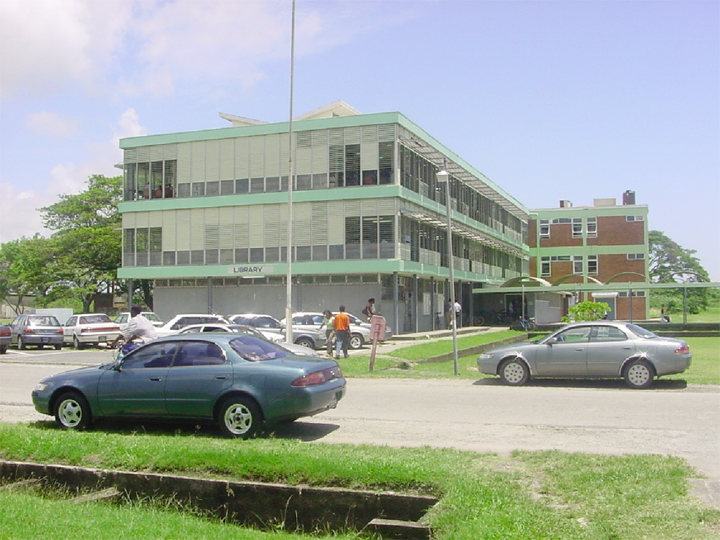The University of Guyana (UG) has been allocated $1.7 billion out of the $28.7 billion government has budgeted for the education sector for 2013 and of this figure $450 million is for student loans.
Last year $1.3 billion was allocated. The amount budgeted for student loans remain the same.
Finance Minister Dr Ashni Singh, while speaking on the education sector during his 2013 budget presentation yesterday said that government will continue to invest in the university.

He said that included in the total amount provided to the university is a sum of $50 million to “promote greater access to tertiary level education by establishing online programmes”.
According to Singh, a feasibility study for the new Centre of Excellence for the Study of Biodiversity and a management and personnel study of the university’s human resources will commence this year. He said that through the US$10 million project to strengthen the School of Earth and Environmental Science, technical assistance and other support to lecturers would be provided for programmes relevant to the LCDS, while grants would be provided to researchers towards generating knowledge products that directly contribute to the LCDS.
In support of this, he said, 14 laboratories in the Science and Technology faculties will be rehabilitated, while full internet connectivity will be provided to all faculties and the library. This project represents a major government investment in the university and in particular in its science and technology teaching and research capabilities.
Last year $80 million was allocated under this project towards the commencement of curriculum reform, research support, and infrastructure rehabilitation.
Singh said government recognises education as “essential for reducing poverty, supporting personal empowerment, and achieving national development” and as such allocated $28.7 billion, an increase of the $26.5 billion allocated last year.
He said that out of the money granted to this sector last year $2.9 billion was spent on construction, extension, rehabilitation and maintenance of additional educational facilities countrywide to ensure increased access.
Singh said that in an effort to increase enrolment and attendance rates of children in schools, as well as reduce the drop-out rate, over $1.2 billion was spent on the School Feeding Programme, which benefited over 64,000 students. Additionally, $296.7 million, he said, was spent on the National School Uniform Programme which benefited over 190,000 children in nursery, primary and secondary schools.
According to the minister, significant gains have been made in increasing the percentage of trained teachers in the public education system. Further, 2,965 teachers were trained in ICT. Amounts totalling $1.3 billion were expended to equip and staff technical and vocational institutions, which continue to provide an alternative education pathway for our youths.
He said that including the money budgeted for this year, the total amount allocated to this sector between 2008 and 2013 is $139 billion. The sector, he said is currently engaged in the development of a new five-year strategic plan.
This year, the physical infrastructure of schools and other educational facilities countrywide will benefit from an investment of over $3 billion, Singh said adding that this figure includes the construction of Kato Secondary Complex which provides for 350 students, the reconstruction of One Mile Primary, and extensions to Alexander Village Nursery, East Street Nursery, St Barnabas Special School, Tutorial Academy and Tagore Memorial Secondary, rehabilitation of St Rose’s High, and maintenance of other schools and educational facilities countrywide.
Singh told the National Assembly that a total amount of $1.1 billion is budgeted for the School Feeding Programme which will see over 64,000 school children benefiting from either juices and fortified biscuits or a hot meal. In addition, the school uniform programme will continue to reduce the financial burden on families and will see one school uniform distributed to every child attending a school in the public education system from nursery to Grade Eleven, he said.
Emphasis, he said, will continue to be placed on increasing the presence of trained teachers in the classroom, and some 409 newly trained teachers are expected to enter the education system in August 2013, while another 41 teachers will complete the requirements for certification under the Trained Teacher’s Certificate Programme. In addition to this, Singh said that a further 68 in-service teachers in Regions One and Nine will continue to access the Trained Teacher’s Certificate, while 366 students will continue to access the Associate Degree in Education at the coastal centres and Linden.
He said that in an effort to strengthen the management and quality of staff members, lecturers and administrators, training will be conducted to ensure use of ICT in the delivery of the curriculum. This will complement the 35 IT labs which are expected to be completed in 2013, while 3,000 teachers will be trained in ICT literacy “bringing us closer to the target of having all secondary schools equipped with computers and all secondary teachers trained in the use of computers for education delivery,” he added.





